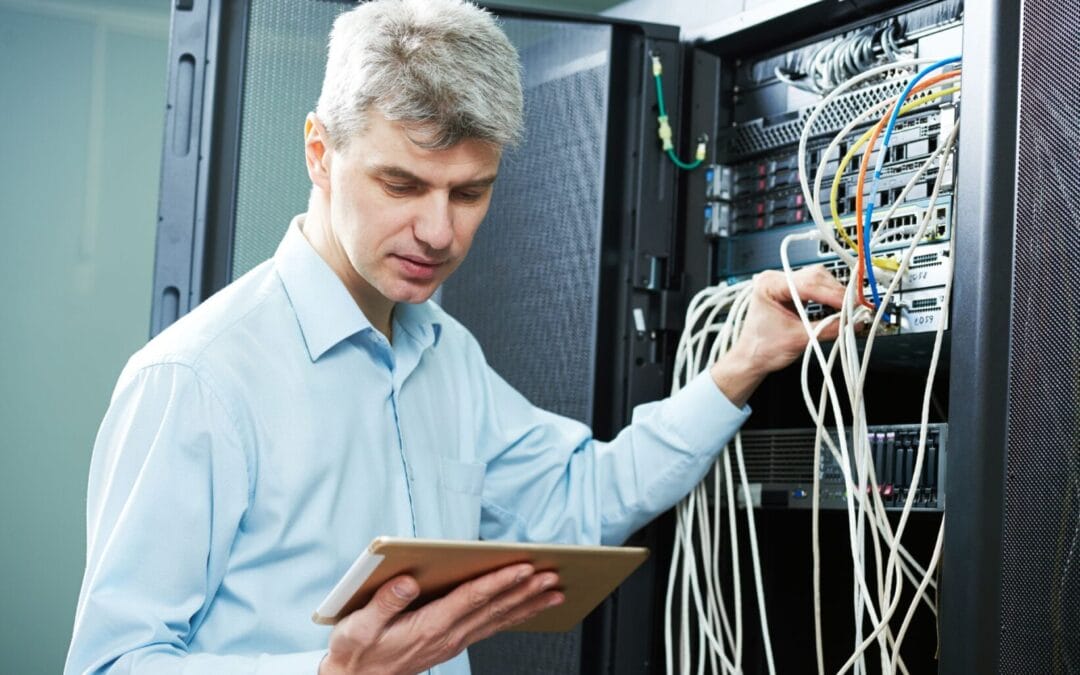Installing hardware might seem like a straightforward step, but skipping the details can cause big problems down the line. When setting up a business network, the last thing you want are surprise delays or hidden issues making things harder for your team. If the hardware isn’t installed right from the beginning, network slowdowns, unexpected outages, or full system reboots can become regular headaches. Being thorough now prevents frustration later.
Too often, businesses in East Walpole face hardware hiccups because something was overlooked during setup. Maybe a cable wasn’t routed properly. Maybe the hardware wasn’t fully compatible with the rest of the system. These might sound like small issues, but they can turn routine tasks into constant troubleshooting. That’s why it helps to approach the setup process with a clear checklist, trusted advice, and smart planning from the start.
Understanding The Importance Of Correct Hardware Installation
When hardware connects every part of a business’s operations, even one bad connection can bring work to a stop. A slow video call, a dropped transaction, or a frozen screen during peak business hours all point to the same thing: something in the network isn’t functioning as it should. Most of the time, this traces back to hardware that wasn’t installed correctly or isn’t fully suited for the system it’s part of.
Hardware installation isn’t just plug-and-play. Each piece needs to be in sync with the rest of the system. That means the wiring, the position of the hardware, and the data load it’s expected to manage should all be factored in. If any of these areas are skipped or done wrong, you might notice connection lags, overheating equipment, or even device failures.
For example, we once came across a setup where the server rack was installed right next to the HVAC vent. It seemed harmless at first. But as temperatures shifted, moisture began to build up in the corner where the hardware was. The client experienced consistent reboots and couldn’t figure out why until it was traced back to this environmental issue. The setup wasn’t faulty, but its surroundings hadn’t been considered.
Correct installation is the foundation of good performance. It lowers future repair costs, reduces downtime, and increases the network’s reliability. If something gets set up right once, you don’t have to chase it down later.
Plan And Prepare Before Installation
If you’re going to get hardware installation done right, the planning that happens before it begins is where it all starts. Rushing into the setup may feel like you’re saving time, but it usually causes more delays in the long run. Think of a good install like building a solid house. You can’t start hammering boards together without checking the blueprint and knowing where everything goes.
Start your plan with a basic checklist:
1. What are your business’s current network needs?
2. Are you upgrading old equipment or adding something new?
3. Where will the hardware be physically located?
4. Who is responsible for managing the setup and testing once installation is complete?
Take time to map out your network. Know where each part will live and how they connect. Be sure to review electrical access, available space, and airflow inside the room. Putting hardware in a cramped closet without airflow can damage your system over time.
It also helps to consult with a professional to review your layout and confirm if there are any load or design limitations. For example, they might catch something that gets missed, like outdated cabling that isn’t compatible with your new switch or router. Those kinds of things are easy to overlook when you’re focused on just getting it all up and running.
Good preparation can prevent long-term problems. It helps you avoid installing something twice or rewiring after the fact. With a plan in place, the rest of the job becomes smoother and more predictable.
Choose The Right Hardware
The quality of your network depends a whole lot on the hardware you choose. It’s tempting to go for whatever’s available or cheapest, but that can lead to regrets. Hardware that doesn’t match your needs can drag down your entire system. Devices can end up working harder than they should or struggle to handle the volume your business demands. That’s when performance issues start to creep in.
Compatibility matters. Before you buy anything, check if the new hardware works with what you’ve already got in place. For example, pairing outdated switches with newer access points can bottleneck your data flow. This can cause lags in voice, video, or point-of-sale systems when your staff needs them most.
It’s also important to avoid common buying mistakes such as:
– Choosing hardware based strictly on price
– Getting consumer-grade equipment for a business environment
– Skipping support or warranty options
– Ignoring future scalability
Investing in quality gear usually pays off. The right equipment handles larger workloads, provides better security options, and lasts longer with fewer issues. A network should grow with your business, so thinking ahead helps save time and money later.
In short, don’t settle for quick fixes. Let your network needs lead the decision process. If you’re unsure, bringing in a technician to review your setup can help you find gear that fits now and still works if the business expands.
Follow Manufacturer’s Guidelines For Installation
Getting your hands on the right hardware is one thing, installing it properly is another. Every piece of network equipment comes with its own set of instructions for a reason. These documents aren’t just fluff. They show how to install a device, configure it, and keep it within warranty. Skipping this part or relying on guesswork can create setbacks.
One common issue is connecting devices to the wrong power type or voltage. Even something simple like mounting an antenna in the wrong position can affect wireless signal performance. These might not seem like major slipups, but they can lead to service issues or damage over time.
Here’s what to look out for during installation:
– Check power requirements and ventilation spacing
– Follow mounting instructions carefully
– Use the recommended cabling and connectors
– Configure settings as directed
– Keep firmware and software updated per guidance
If you’re ever stuck, call the support number on the manual or check the vendor’s website for help. They usually offer setup tools, diagrams, and walk-throughs that make everything easier. Ignoring these resources can turn a routine setup into a drawn-out problem.
Straightforward mistakes early on cost more to fix later. Respecting the setup process, no matter how familiar the hardware feels, is a good habit.
Test And Validate Every Setup
Once the installation looks finished, don’t assume everything’s ready to go until it’s tested. This is the step where small oversights reveal themselves. A switch may power up fine, but if it’s misconfigured, your endpoints won’t connect properly. Taking time to double-check this helps catch loose connections or incorrect port settings before they turn into actual problems.
Here’s a basic walkthrough to guide your post-installation testing:
1. Power up and check for error lights on each device
2. Confirm devices are connected correctly on the network and recognize each other
3. Run a speed test through key access points
4. Try using voice, video, and POS systems as you would during business hours
5. Make sure login credentials and security settings function as expected
Write down what you’ve tested and keep a copy of your final setup configuration. If something ever goes wrong down the road, these notes can save you hours. Treat this part of the job like a quality check before handing the system over to your team. Nothing replaces the peace of mind that comes with a smooth, stable installation.
Regular Hardware Maintenance Practices
Once everything is running, it doesn’t mean you’re done forever. Even the most dependable hardware needs regular care. Over time, dust builds up, firmware becomes outdated, and settings may need adjustments based on how systems are actually used.
Set up a routine that keeps your network equipment clean, up-to-date, and stable. Here are a few smart habits to keep in rotation:
– Wipe down vents and fan intakes monthly
– Update firmware quarterly or as advised
– Review system logs for error messages or connection issues
– Label cables and hardware clearly in case they need to be replaced
– Check for physical wear or signs of overheating
It’s also helpful to keep a maintenance log. Tracking service dates, updates, and issues gives you a better idea of when a device might need to be replaced or upgraded. That way, you’re not scrambling during a system failure.
By staying ahead of routine maintenance, your network keeps running like it’s supposed to. Small tasks spaced out over time are easier to manage than a full repair in a stressful moment.
Keep Your Network on Track Without the Headaches
The way you install your network hardware has a direct effect on how well your entire system performs. Taking the time to plan, purchase the right equipment, and install everything properly lays the groundwork for a safer, faster, and more reliable network. Skipping any step, even one, creates room for trouble.
In East Walpole, where businesses are relying more on wireless tech, point-of-sale devices, and hybrid work tools, installation problems don’t just cause slow internet. They slow everything you’re trying to do. When your network goes down during a key moment, it’s hard to recover the momentum.
Good hardware setup, backed by regular upkeep, helps avoid surprise outages and keeps your business moving forward. When the setup is clean, the devices are updated, and testing is part of your process, your network can stand up to constant use without falling apart at the seams.
To ensure your network operates efficiently and without hiccups, focusing on every detail of hardware installation in East Walpole is important. If you’re looking to enhance your setup, consider partnering with ASCIO Wireless for expert assistance. We understand the challenges businesses in East Walpole face and are ready to help elevate your network’s performance.

